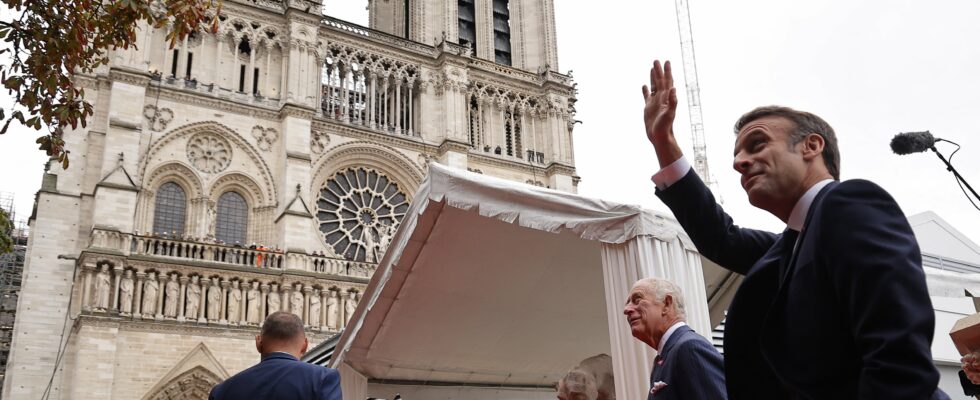The oldest will say that on several occasions in the past, the idea of a Notre-Dame de Paris museum was considered, then abandoned. 2024 should have been the year it finally came true. On December 8, 2023, during a visit to the cathedral reconstruction site, Emmanuel Macron declared himself in favor of the creation of such a place. Charles Personnaz, director of the National Heritage Institute, was responsible for drawing its outlines. But while on December 7 and 8, the Head of State celebrates with great pomp the reopening of Notre-Dame de Paris, the financing of an adjoining museum seems less of a priority, and the ambition of the public authorities, more modest.
A few months ago, the project seemed consensual. At the Elysée, at the Diocese of Paris, at the Ministry of Culture and at the Hôtel de Ville, everyone was aware that when it reopened, after five years without a visit, the cathedral would attract more curious people and believers than ever. Already, before the fire, it was the busiest place in France, far ahead of the Louvre Museum and the Palace of Versailles. Now, with some 15 million people expected each year, a nearby museum would better regulate flows. To test the idea, a first report is ordered from Charles Personnaz in mid-2023. After the presidential green light, a second follows, in spring 2024. But it is never made public. The project raises reservations on at least three points.
A geographical impasse
The first concerns its location. The ideal, to facilitate the passage from the cathedral to the museum, would be to install it in the nearby Hôtel-Dieu. But the AP-HP already has a project for the old hospital, led by the developer Novaxia, combining care, businesses, housing and shops. The AP-HP does not have the means to renege, it needs these revenues. She drags her feet on the museum project, refuses to offer premises overlooking the cathedral square, the most lucrative for the developer. Through negotiations, a compromise was found; the museum could have several thousand square meters at the rear, on the flower market side, with possibly a passage through the main entrance. But the agreement is still only in principle because the Hôtel-Dieu project as a whole is suspended from a modification of the local urban plan on which the Paris Council, divided, has given up voting. However, the “declaration of public utility” which could replace it has still not been granted by the prefecture, the AP-HP having delayed in submitting the request. We are now talking about the beginning of 2025.
In the meantime, to this geographical impasse, questions have been added about the content and philosophy of the museum. In his report, Charles Personnaz provides a chronological journey combining three themes: the history of the cathedral and its district, the Île de la Cité, that of the artistic production linked to Notre-Dame and that of the site from its construction until ‘to its contemporary renovation. But the project raises eyebrows. First, because it means that several museums, that of Cluny dedicated to the Middle Ages, the Louvre, the Fine Arts of Arras and a few others will have to transfer part of their collections to this new place. A concession often poorly experienced. The profile and career of Charles Personnaz, very involved with Eastern Christians, also raise fears of a museographic journey that is more religious than cultural. A few lines from his report on the “raison d’être of a Notre-Dame museum” contributed to fueling concerns.
Finally, the means necessary to open this museum are not really up to date. Certainly, Charles Personnaz’s project is counting on a substantial contribution from ticketing to operating costs. Hoping to capture 5% of Notre-Dame visitors with an average basket of 7 euros, a large part of the needs would be covered. But the contribution for the creation of the museum, estimated at a minimum of 120 million euros, remains to be found. The Ministry of Culture, with its 2025 budget equivalent to that of the previous year, can only afford this to the detriment of the maintenance of other large establishments. Already, in the corridors of power, some are starting to talk about a more modest offer, a few hundred square meters placed under the aegis of the Center of National Monuments around the history of the site. An unofficial way of burying the project.
.
